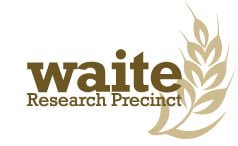
- This event has passed.
Joint APPN/WRI Seminar: visiting academic Professor Ayman Habib from Purdue University


Joint APPN/WRI seminar
 Presenter: Professor Ayman Habib, Purdue University, Indiana, USA
Presenter: Professor Ayman Habib, Purdue University, Indiana, USA
Date: Friday 1st August 2025, Midday, McLeod Lecture Theatre, Waite Campus
Title: The use of near proximal and proximal sensing for high throughput phenotyping
Abstract: Over the past few decades, Mobile Mapping Systems (MMS) have been demonstrated as an effective technology for collecting geospatial data for a wide range of applications such as geometric documentation of transportation corridors, smart agriculture, digital forestry, infrastructure monitoring, environmental management, archeological documentation, and resource inventory. MMS continue to evolve due to the unprecedent developments in sensor technology and emerging applications that could benefit from collected geospatial data. For example, the continuous developments in direct geo-referencing technology (i.e., integrated Global Navigation Satellite Systems – GNSS – and Inertial Navigation Systems – INS) and remote sensing systems (i.e., passive and active imaging sensors in the visible and infrared range – RGB cameras, hyperspectral push-broom scanners, and laser scanning) are providing the professional geospatial community with ever-growing opportunities to generate accurate 3D information with rich set of attributes. These advances are also coupled with improvements in the sensors’ performance, reduction in the associated cost, and miniaturization of such sensors. Aside from the sensing systems, we are also enjoying the emerging of promising platforms such as Uncrewed Aerial Vehicles (UAVs), Uncrewed Ground Vehicles (UGVs), and portable systems (e.g., backpack units).
The use of imagery and LiDAR is becoming popular for high throughput phenotyping. This talk will cover the challenges, prerequisites, and processing of image and LiDAR data in support of high throughput phenotyping. Covered topics will include: 1) algorithmic developments for improved calibration of multi-sensor/multi-platform phenotyping systems; 2) challenges facing UAV-based Structure-from-Motion strategies for deriving point clouds from imagery over seed breeding trials; 3) benefits of integrating imaging and LiDAR systems onboard near proximal and proximal sensing systems; 4) applications of LiDAR remote sensing systems for plant height estimation, row/alley detection, and canopy cover estimation; and 5) interactive visualization of multi-sensor/multi-platform/temporal geospatial data for improved comprehension of delivered products.
Bio: Ayman Habib is the Thomas A. Page Professor at the Lyles School of Civil Engineering at Purdue University. He is the Co-Director of the Civil Engineering Center for Applications of UAS for a Sustainable Environment (CE-CAUSE). He is also the Associate Director of Purdue University’s Joint Transportation Research Program (JTRP) and Institute of Digital Forestry (iDiF). He received the M.Sc. and Ph.D. degrees in photogrammetry from The Ohio State University, Columbus, OH, USA, in 1993 and 1994, respectively. His research interests include the fields of terrestrial and aerial mobile mapping systems using photogrammetric and LiDAR remote sensing modalities, UAV-based 3D mapping, and integration of multi-modal, multi-platform, and multi-temporal remote sensing data for applications in transportation, infrastructure monitoring, environmental protection, precision agriculture, digital forestry, resource management, and archaeology.
Join from PC, Mac, iPad, or Android:
https://adelaide.zoom.us/j/84514470537?pwd=TwHl8YNRH4jBRF8xYLIrVU79RGePjO.1
Passcode:969652
